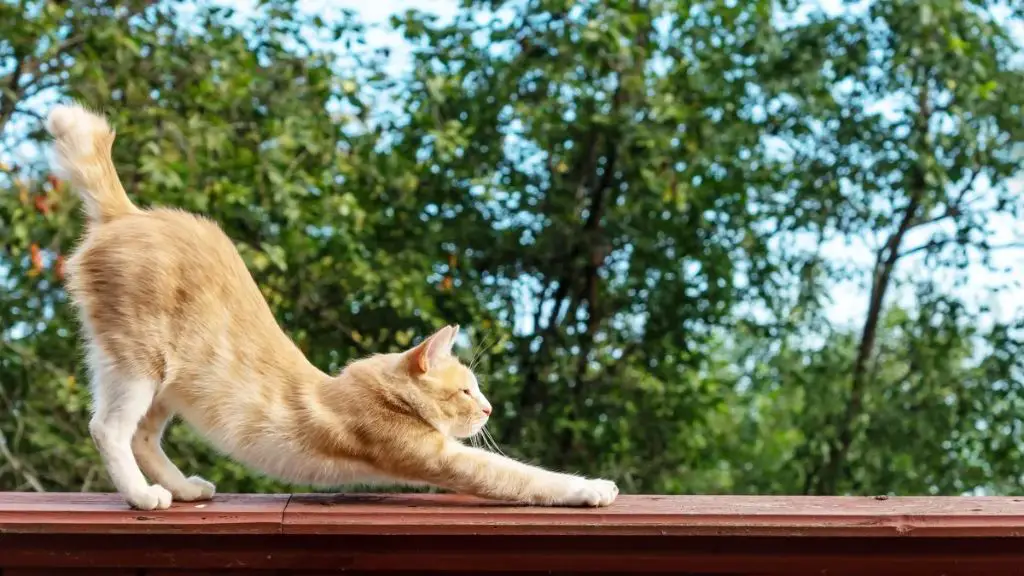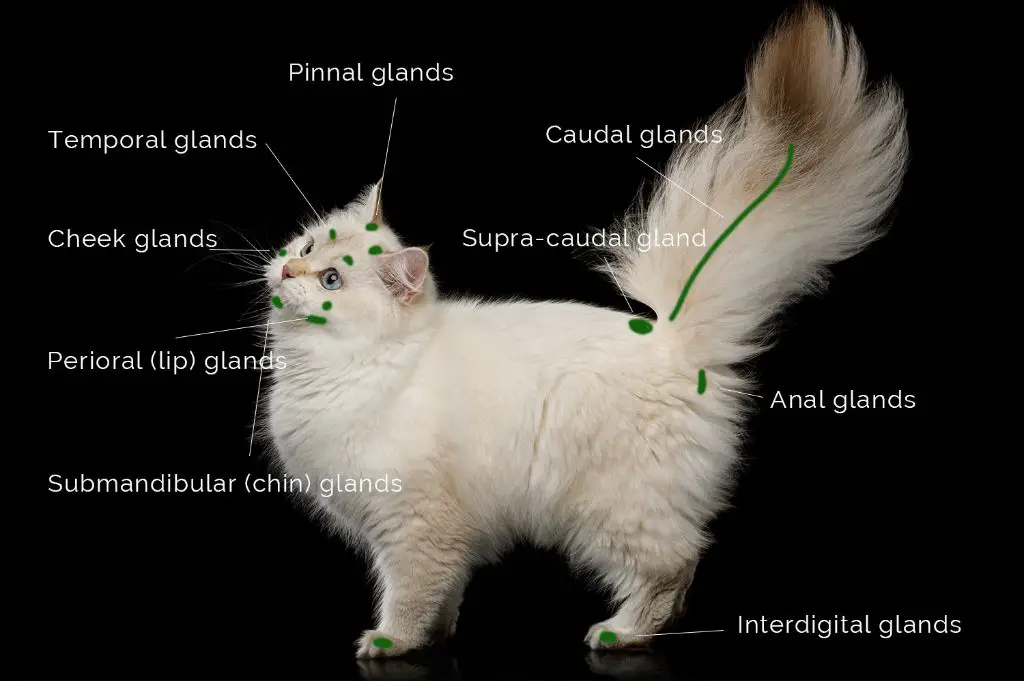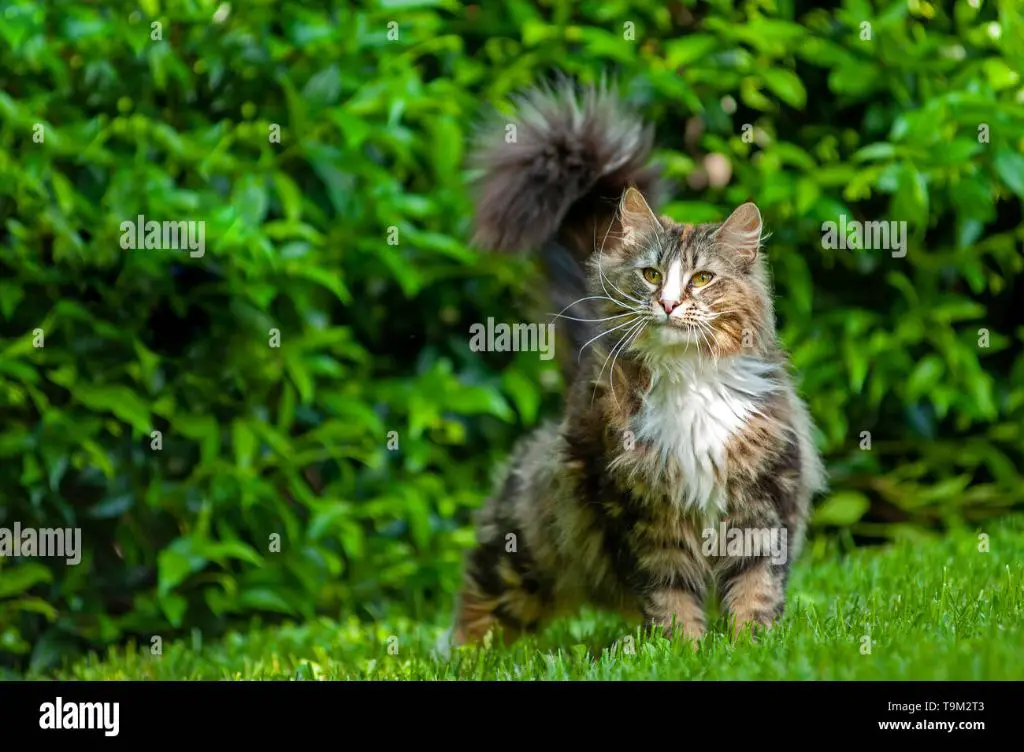Why Do Cats Lift Their Bums When You Pet Them?
Have you ever noticed your cat raise its hindquarters in the air when you go to pet it? This funny behavior that seems to come out of nowhere is actually very common in cats. When you strokethem along their back, their reaction is to arch up and direct their rear end towards you. It can look like they’re stretching, asking for a butt rub, or just presenting their backside to you in a strange way. But there’s more to it than that!
This peculiar posture is instinctual and stems from some of a cat’s natural behaviors and biology. Understanding the reasons behind the “butt lift” can help you better appreciate the unique ways cats communicate and interact with their human companions.
Instinctual Behavior
Cats raising their hindquarters when petted is connected to their origins as wild animals and feline communication behaviors. Domestic cats retain many of the instincts of their ancestors. In the wild, cats needed to protect their vulnerable rear areas in order to survive potential attacks. So when a cat exposes this area to a human by lifting their bum, it signals trust and affection.

Cats also use their hindquarters to spread pheromones and scent mark territory. According to OVs Cat Hospital, cats have scent glands located around their anus and tail area. When they put their hindquarters in the air, it allows them to spread pheromones more widely to other cats. This communicates information to other felines about their identity, status, and territory.
So when cats lift their bum toward their human companion to be petted, they are mimicking natural feline greeting behaviors and inviting the human to share in their scent ritual. It demonstrates that they view their human as part of their community and territory.
Showing Affection
One of the most common reasons cats lift their bum when petted is as a positive response and request for more affection. When cats enjoy being petted, especially along the back, rump, and tail base areas, they instinctively elevate their hindquarters into the air. This “elevator butt” posture signals they are enjoying the attention and asking for more pets in that spot. According to cat behaviorists, when cats lift their rear it stimulates the release of oxytocin, also known as the “love hormone”, promoting bonding and affection between cat and owner. Petting sessions are an important way for cats and their owners to strengthen their relationship. So next time your cat lifts its bum during pets, it’s simply an invitation for more quality time together.
Sources:
[Why Cats Raise Their Butts When You Pet Them](https://catbehaviorassociates.com/why-cats-raise-their-butts-when-you-pet-them/)
Scent Glands
Cats have scent glands located in various places on their body. These glands secrete pheromones and allow cats to mark their territory. One key location of scent glands is in between a cat’s toes, known as interdigital glands [1]. When a cat kneads or scratches, it spreads its scent from these interdigital glands. Stretching the paws causes more secretion from the glands, allowing the cat to leave a stronger scent mark. Aside from the paws, cats also have scent glands on their cheeks, lips, chin, tail, and around the anus [2].
The pheromones secreted from these glands convey information to other cats. For example, pheromones from the facial glands provide identity, social status, and reproductive status cues. Pheromones from the anal glands can signal territorial boundaries. When cats rub against objects, they are using their scent glands to mark their territory and provide visual cues to other cats.

Back Arching
When cats arch their backs, they are using specific muscles to create the arch in their spine. The longissimus dorsi muscles on either side of the spine contract to flex the back upwards[1]. This muscle movement improves blood circulation along the back and stretches the spine for better alignment. Cats have very flexible spines that allow them to arch dramatically. The stretching and muscle contractions help keep their spines supple. Arching also allows cats to reach itchy spots they can’t normally get to. By curving their backs, cats can use their rear legs or tail to scratch places like their shoulders or neck. The arching action extends the spine for maximum stretching and realignment. This spinal flexibility contributes to a cat’s agility and ability to twist themselves into cozy sleeping positions.
Tail Area Sensitivity
Cats have a large concentration of nerve endings at the base of their tail, which makes this area very sensitive to touch [1]. When a cat is pet near the base of the tail, it can stimulate these nerve endings and create a pleasurable sensation for the cat. This is why many cats enjoy being pet and scratched in this area. The sensation likely feels good to the cat in the same way that scratching an itch does for humans.
When pet at the base of the tail, cats will often arch their backs up into the hand that is petting them. They lift their hindquarters off the ground and push upwards into the petting hand. This allows them to direct contact right to the sensitive part of their tail to maximize the pleasurable feelings. Some cats may also begin to purr or meow happily when pet near their tail base because it provides enjoyable stimulation.
Overstimulation
Overstimulation happens when a cat finds being petted or handled unpleasant or over-arousing. Cats may show signals that petting is becoming too much for them before resorting to aggressive behaviors like biting or scratching. According to the Humane Society of Huron Valley, “This is called petting induced or overstimulation aggression. It’s a common behavior in many cats, and is something that can be both frustrating and frightening for owners.”

Watch for signs of overstimulation like dilated pupils, twitching or thumping tail, ears folding back, skin rippling, or sudden aggression. If you notice these signals, stop petting immediately and allow the cat to calm down before resuming. Give the cat space and let them disengage on their own.
To help prevent overstimulation, pet the cat in short bursts of a few minutes, then give them a break before petting again. Pet them gently in their preferred areas like under the chin or cheeks, and avoid sensitive areas like the lower back and tail until the cat is very comfortable. Go at the cat’s pace and let them walk away when they’ve had enough.
Medical Causes
Sometimes a cat raising its hindquarters can be indicative of an underlying medical issue rather than a behavioral response. This is especially true if the behavior is accompanied by signs of pain or distress in the cat.
One potential medical cause is pain in the hindquarters or tail area. Cats may raise their rear in response to discomfort caused by injuries, arthritis, muscle strains, or other conditions affecting the hips, back legs, or tail. The elevation can be an attempt to relieve pressure on the painful area.
Problems with the anal glands or nerves supplying the hind end can also elicit a butt raise. Impacted anal glands, infections, or nerve damage related to feline diabetes are examples. The kitty may be trying to get relief from itchiness or other odd sensations.
If a cat starts frequently raising its hindquarters, or crying/growling when doing so, a veterinarian should examine the cat to diagnose and treat any underlying medical conditions.
Breed Tendencies
Some cat breeds are more likely to lift their bums when being petted than others. This behavior tends to be more common in longhair breeds compared to shorthair breeds. The furry behinds of longhair cats are sensitive areas that elicit a butt raise when touched. Breeds like Persians, Maine Coons, Ragdolls and Norwegian Forest Cats frequently exhibit this reaction.

In contrast, shorthair breeds with less fur like Siamese, Russian Blues, Bombays and Sphinxes are less prone to lifting their bums. With less fur, their hindquarters are not as sensitive. However, individual personality differences still play a role, so some shorthair cats may still raise their butts.
In general, the furrier the cat breed, the more likely they are to lift their bum in response to pets and scratches. It’s simply an instinctive reaction from sensitive fur stimulating nerve endings on a cat’s backside. Certain breeds have been selectively bred to have more of this fur over time. So a furry rear end elicits a stronger butt raise response when touched by humans.
Conclusion
In summary, there are several key reasons why cats lift up their bums when you pet them. It is primarily an instinctual behavior that allows cats to mark you with their scent. By raising their hindquarters, they can deposit pheromones from their anal glands onto you, marking you as a trusted friend. This back arching also gives you better access to scratch or pet near their tail, an area loaded with sensitive nerve endings. While usually benign, in some cases it may signal overstimulation or an underlying medical issue. Most commonly though, it simply shows a cat is happy, comfortable, and returning your affection.
Some interesting facts include certain breeds like Siamese tending to exhibit this trait more often. Male cats may also be more likely to raise their bums compared to females. The key takeaway is that a cat lifting its backside is communicating positive emotions in response to human touch. It demonstrates trust, contentment, and the unique way cats create social bonds. So next time your cat periscopes its hindquarters into the air, take it as a feline compliment!

